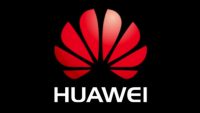Banned from buying U.S. technology, Huawei Technologies is still struggling to replace Google apps, which it utilized for ten years. Although all demand for smartphones is down during the coronavirus pandemic, Huawei’s phones are seeing a 35 percent slowdown of shipments outside of China. According to Canalys, that’s more than double the drop faced by its rival Samsung Electronics and four times that of Apple. The slide threatens to topple Huawei from its No. 2 position in global cell phone brands.
The Wall Street Journal reports that, according to Canalys, the “collapse [also] threatens … the company’s broader consumer-gadgets business, a thriving area that last year contributed more than half of its $122 billion in revenue.”

Huawei responded to the ban by “reordering its supply chain to bypass the U.S. and developing its own chips and other replacement parts” and it continues to ink deals to build 5G networks around the world. But replacing Google “has proved tougher.” Although Huawei can and does use Google’s open-source operating system Android, it can’t access Google’s popular apps and “other proprietary software.”
Instead, Huawei is “now launching devices [including its flagship P40 and Mate 30] with an in-house software package, Huawei Mobile Services,” that includes its own web browser and email app and features an AppGallery app store designed to “replace Google Play, though the blacklisting means the store lacks popular selections like Facebook and Google’s YouTube.”
Huawei reported that 1+ million developers are working on apps for its new store, which now has 400 million monthly active users. Among the AppGallery developers are “Dutch navigation company TomTom … French search engine Qwant … [and] publisher News UK.” U.S. under secretary of state Keith Krach, bringing up concerns about privacy, tweeted that he was “very troubled” that developers were writing apps for Huawei. “Many are watching closely,” he added.
Strategy Analytics executive director Neil Mawston “estimated at least 90 percent of [the AppGallery’s 400 million monthly users] are in China.” Canalys noted that the company’s “sales plunge outside China is reversing the strides it had made in markets such as Western Europe, where it briefly unseated Apple as No. 2 mobile-phone vendor before slipping to third after its blacklisting.”
“There is a risk that Huawei’s smartphone business will get smaller, that it will become a China-centric business,” said Jefferies telecom analyst Edison Lee.
Related:
Trump Extends U.S. Telecom Supply Chain Order Aimed at Huawei, ZTE, Reuters, 5/13/20

No Comments Yet
You can be the first to comment!
Sorry, comments for this entry are closed at this time.